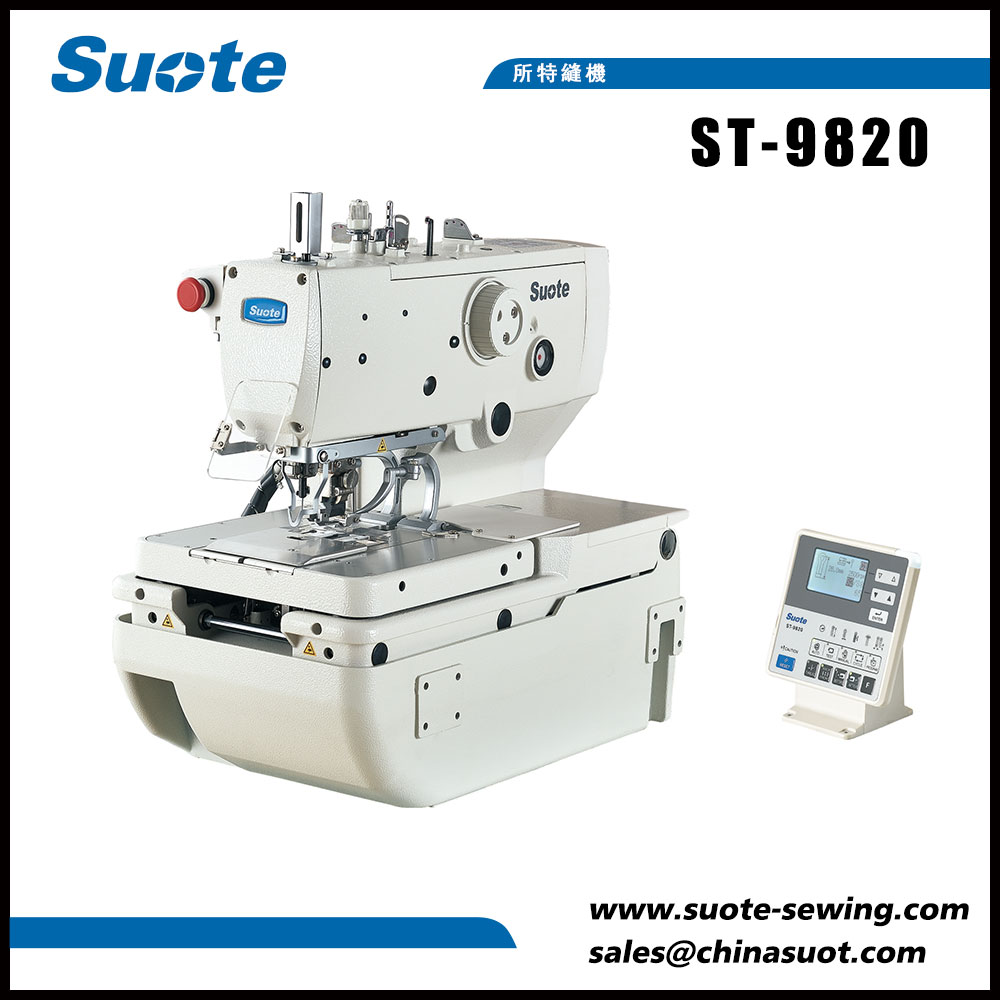Button sewing machine: Types and Operation
2024-06-28
A button sewing machine is a specialized machine designed specifically for attaching buttons to garments and other textile products efficiently and securely. Here’s an overview of the types and operation of button sewing machines:

Types of Button Sewing Machines
1. Manual Button Sewing Machines:
- These machines are operated by hand and are typically used for small-scale button sewing tasks. They require the operator to manually position the button and fabric under the needle and to control the sewing process.
2. Semi-Automatic Button Sewing Machines:
- These machines are partially automated, requiring some manual input from the operator. They typically include features such as automatic feeding of buttons and fabric positioning, but the operator needs to initiate and control the sewing process.
3. Fully Automatic Button Sewing Machines:
- Fully automated machines are capable of sewing buttons onto garments without continuous operator intervention. They often include features such as automatic button feeding, fabric alignment, sewing, and trimming of threads.
Operation of Button Sewing Machines
1. Preparation
- Button and Fabric Placement: Position the garment or fabric under the button sewing machine’s presser foot. Ensure the button is correctly aligned with the needle and that the fabric is securely held in place.
2. Setting Parameters
- Stitch Type and Length: Select the appropriate stitch type and length based on the fabric and button type. Different stitch patterns may be used depending on the button and fabric characteristics.
3. Button Feeding
- Automatic Feeding (if applicable): For semi-automatic and fully automatic machines, buttons are often fed into the machine from a hopper or tray. The machine aligns the button with the needle automatically.
4. Sewing Process
- Needle Positioning: The machine positions the needle directly over the button and fabric.
- Sewing Mechanism: The machine lowers the needle to sew through the buttonholes, fabric, and thread shank, securing the button in place.
- Thread Trimming: Some machines automatically trim excess thread after sewing each button.
5. Completion
- Release and Repeat: After sewing each button, the machine releases the garment or fabric. For machines with multiple sewing heads, the process may continue automatically until all buttons are sewn.
Benefits of Button Sewing Machines
- Efficiency: Speeds up the button sewing process compared to manual methods.
- Precision: Ensures consistent and accurate button placement and sewing.
- Versatility: Can handle a variety of button sizes and types, including flat buttons and shank buttons.
- Durability: Creates secure button attachments that withstand wear and washing.
Considerations
- Machine Maintenance: Regular maintenance ensures optimal performance and longevity of the button sewing machine.
- Training: Operators should be trained on machine operation, including setting parameters and troubleshooting common issues.
- Safety: Follow safety protocols to prevent injuries, especially when handling moving parts and needles.
Button sewing machines are essential in industries such as garment manufacturing, textiles, and apparel repair, where precise and efficient button attachment is crucial for product quality and customer satisfaction.


